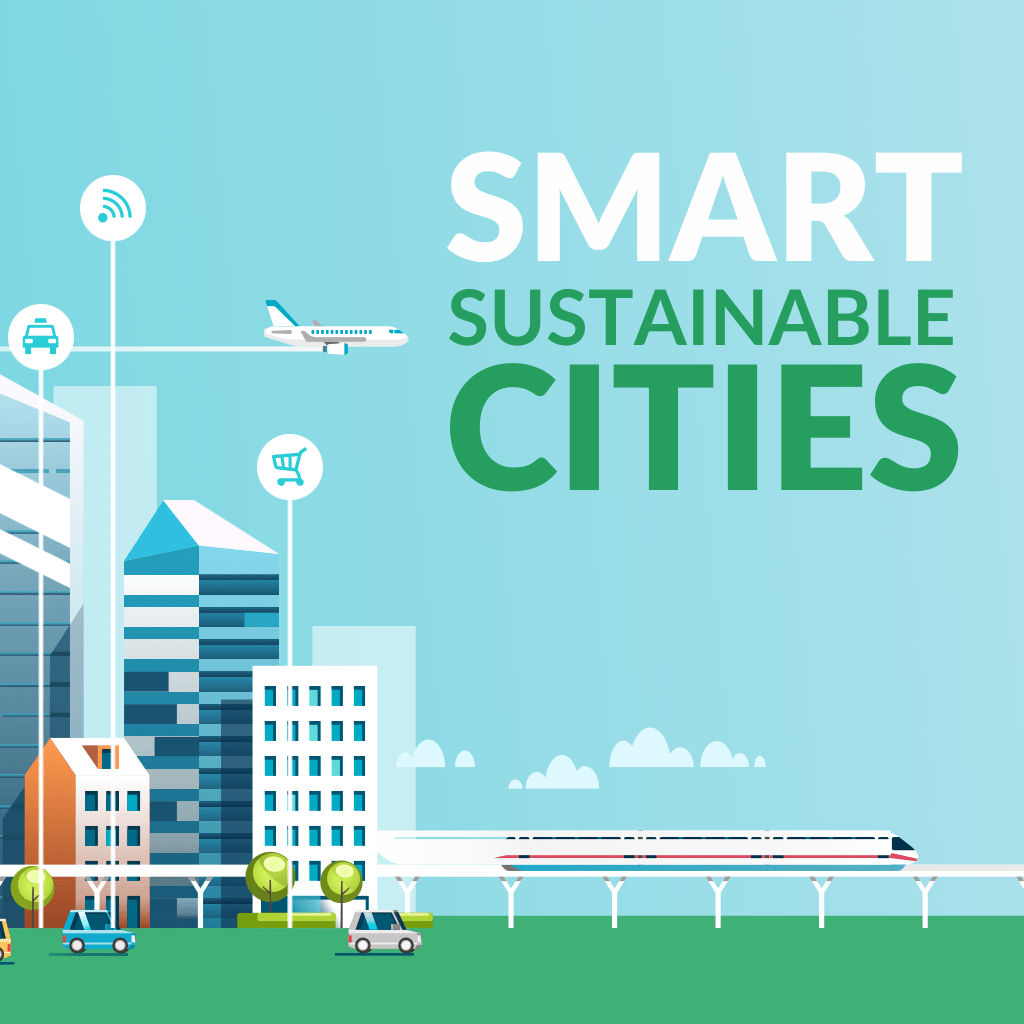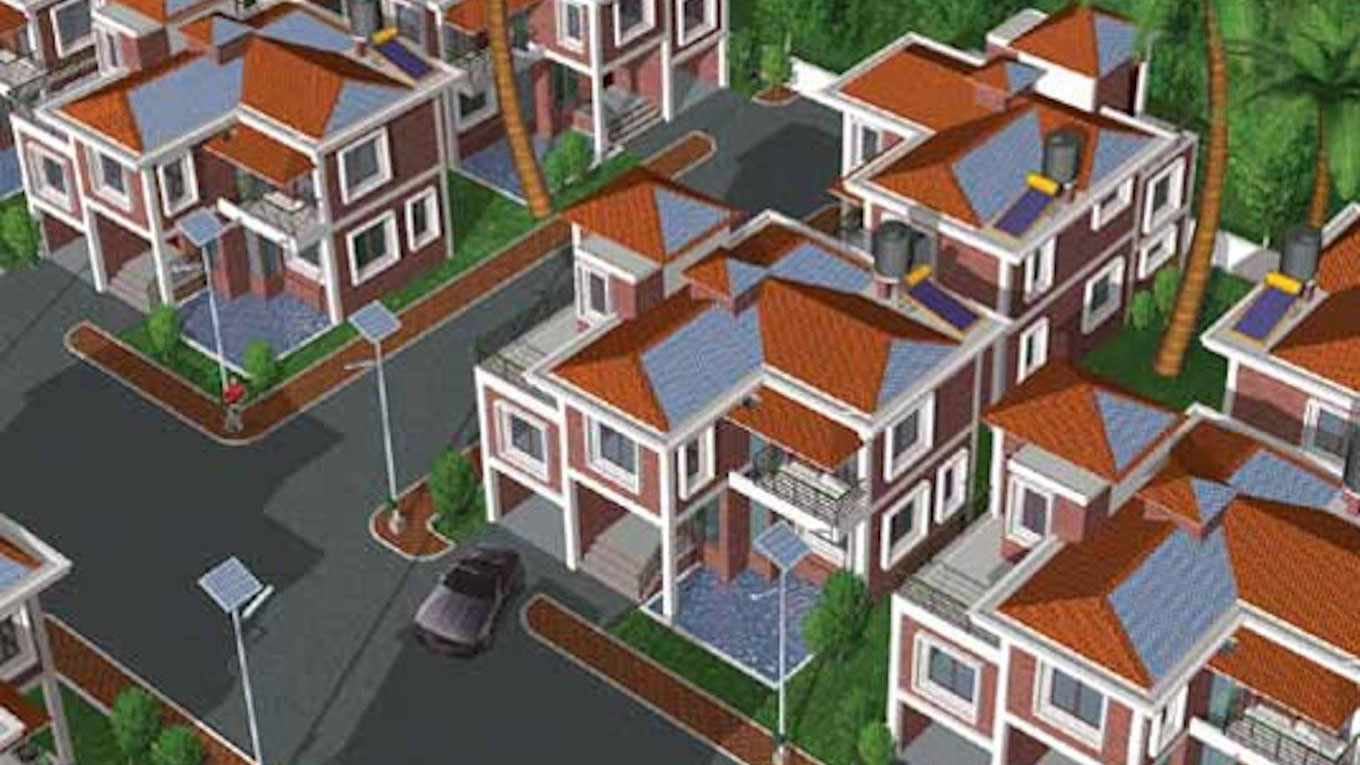Sustainable living refers to a lifestyle that aims to reduce an individual’s or community’s negative impact on the environment and promote the conservation of natural resources for the benefit of future generations. It involves making conscious choices and adopting practices that minimize waste, conserve energy and water, and promote the use of renewable resources.
Here are some key aspects of sustainable living:
- Energy conservation: Reducing energy consumption is crucial for sustainable living. This can be achieved by using energy-efficient appliances, improving insulation in homes, and utilizing renewable energy sources like solar or wind power.
- Waste reduction and recycling: Minimizing waste production and practicing recycling are important aspects of sustainable living. This includes reducing single-use items, composting organic waste, and recycling materials such as paper, plastic, glass, and metal.
- Water conservation: Conserving water is essential, especially in regions experiencing water scarcity. Installing low-flow fixtures, fixing leaks, collecting rainwater, and using water-efficient practices in gardening and landscaping are effective ways to reduce water consumption.
- Sustainable transportation: Opting for eco-friendly transportation methods, such as walking, cycling, or using public transportation, reduces greenhouse gas emissions and promotes sustainable living. Electric vehicles or carpooling are also sustainable alternatives to traditional gasoline-powered cars.
- Responsible consumption: Choosing products and services that are sustainably sourced, produced, and packaged helps reduce environmental impact. Supporting local businesses and buying second-hand or durable goods are examples of responsible consumption.
- Food choices: Adopting a sustainable diet involves consuming locally sourced, organic, and seasonal foods. Reducing meat consumption, supporting sustainable farming practices, and minimizing food waste are important aspects of sustainable food choices.
- Conservation and preservation: Protecting natural resources and biodiversity is crucial for sustainable living. This can be achieved through efforts such as planting trees, preserving natural habitats, and supporting conservation organizations.
- Education and awareness: Raising awareness about sustainable living practices through education and community engagement is vital. Sharing knowledge, participating in environmental initiatives, and encouraging others to adopt sustainable habits contribute to a more sustainable society.
By incorporating these practices into our daily lives, we can contribute to a more sustainable future and help preserve the planet for generations to come.
what is New Town Concept ?
The term “New Town Concept” refers to a planning and development approach that involves the creation of entirely new urban settlements or communities from scratch. It typically involves carefully designing and constructing a complete town or city, incorporating various elements such as residential areas, commercial districts, recreational spaces, infrastructure, and public services.
The New Town Concept emerged in the 20th century as a response to urbanization and the need for organized, well-planned urban development. The idea was to alleviate overcrowding in existing cities, promote efficient land use, and provide a better quality of life for residents. New towns are often built in suburban or rural areas, with the intention of accommodating population growth, reducing urban sprawl, and offering a balanced mix of housing, employment opportunities, and amenities.
Key features of the New Town Concept include:
- Comprehensive planning: New towns are meticulously planned from the outset, considering factors such as population projections, transportation networks, green spaces, utilities, and social infrastructure. The goal is to create a well-functioning and sustainable community.
- Zoning and land use: The land is typically divided into different zones for residential, commercial, industrial, and recreational purposes. This helps to organize the town and create a harmonious living environment.
- Infrastructure development: New towns require the development of robust infrastructure, including roads, utilities (water, electricity, and sanitation), public transportation systems, and communication networks, to support the needs of the growing population.
- Amenities and services: New towns aim to provide a wide range of amenities and services, such as schools, hospitals, shopping centers, parks, sports facilities, and cultural institutions, within convenient proximity to residential areas.
- Housing diversity: New towns often emphasize diverse housing options to cater to different income levels and lifestyles. This may include apartments, townhouses, single-family homes, and affordable housing units.
- Economic opportunities: To ensure self-sustainability, new towns often incorporate employment opportunities within their boundaries, such as industrial zones, office parks, and commercial areas. This reduces commuting distances and fosters local economic growth.
- Environmental considerations: Sustainable design and environmental conservation play a significant role in the development of new towns. Green spaces, energy-efficient buildings, waste management systems, and environmentally friendly practices are typically incorporated.
Notable examples of New Town Concepts include Brasília in Brazil, Chandigarh in India, and Milton Keynes in the United Kingdom. Each of these cities was carefully planned and constructed to serve as a model for urban development.
when it required New Town Concept ?
The New Town Concept is often considered and implemented in the following situations:
- Rapid urbanization: When existing cities are experiencing rapid population growth and urban sprawl, the creation of new towns can help accommodate the increasing population and alleviate pressure on infrastructure, resources, and services.
- Overcrowding and congestion: Existing cities that are plagued by overcrowding, traffic congestion, and a lack of adequate housing can benefit from the establishment of new towns. It allows for better planning, efficient land use, and the provision of improved amenities and services.
- Urban revitalization: In cases where older urban areas are in decline or facing social and economic challenges, the development of new towns can serve as a means of revitalizing the region. By creating a fresh start with carefully planned infrastructure and amenities, it can attract investment, businesses, and residents.
- Regional development: Governments may opt for the New Town Concept to promote balanced regional development. By creating new towns in suburban or rural areas, they can help distribute economic opportunities, alleviate urban-rural disparities, and encourage growth outside major cities.
- Disaster recovery: In the aftermath of natural disasters or large-scale destruction, the New Town Concept may be employed to rebuild communities in a more organized and resilient manner. It allows for the implementation of improved building codes, infrastructure, and disaster preparedness measures.
- Social and economic experimentation: New towns can serve as experimental spaces for testing innovative urban planning, design, and sustainability concepts. They provide an opportunity to incorporate new technologies, alternative energy sources, and eco-friendly practices on a large scale.
- Planned communities: Some new towns are created to cater to specific lifestyles, age groups, or industries. Retirement communities, university towns, or technology hubs are examples where the New Town Concept is utilized to design and develop a community tailored to specific needs and preferences.
It’s important to note that the decision to implement the New Town Concept depends on various factors, including government policies, available land, funding, infrastructure capacity, and the specific needs and challenges of the region.
who it required New Town Concept ?
The New Town Concept may be required or considered in several scenarios and by various stakeholders. Here are some key entities or groups that might find the New Town Concept beneficial:
- Governments: National or regional governments often play a significant role in initiating and implementing new town projects. They may see the need for new towns as a means to manage urban growth, address overcrowding, promote balanced regional development, and improve overall quality of life for their citizens. Governments can provide the necessary funding, regulatory framework, and planning expertise to make new towns a reality.
- Urban planners and architects: Professionals in the fields of urban planning and architecture are instrumental in conceptualizing, designing, and executing new towns. They possess the knowledge and skills to create comprehensive plans, layout infrastructure networks, optimize land use, and incorporate sustainable design principles. Their expertise helps shape the physical and functional aspects of new towns.
- Developers and investors: Private developers and investors are often involved in the construction and financing of new towns. They see the potential for financial returns through real estate development, commercial ventures, and the establishment of businesses in the new town. Developers and investors contribute resources, expertise, and capital to transform the vision of a new town into a reality.
- Communities and residents: New towns are built to provide improved living conditions and opportunities for residents. Existing communities in crowded or deteriorating urban areas may support the creation of new towns as it offers a chance for a fresh start, better housing options, enhanced amenities, and improved quality of life. The residents of new towns have the opportunity to shape and be part of a thriving community.
- Infrastructure providers: Companies and organizations involved in infrastructure development, such as transportation, energy, water, and communication, play a crucial role in implementing the New Town Concept. They contribute their expertise in designing and building essential infrastructure networks that support the functioning of the new town.
- Environmental and sustainability advocates: The New Town Concept presents an opportunity to integrate sustainability principles into urban development. Environmental organizations and advocates may support the creation of new towns as a means to implement green infrastructure, renewable energy systems, sustainable transportation options, and promote environmentally friendly practices.
- Academic and research institutions: Universities and research institutions often contribute to the planning and development of new towns by conducting studies, providing expertise, and offering innovative ideas. They may engage in research projects related to sustainable design, social dynamics, economic development, and urban governance, among other areas.
These stakeholders collaborate and contribute their expertise and resources to bring the New Town Concept to fruition, each driven by their unique perspectives, goals, and motivations.
where it required New Town Concept ?
The need for the New Town Concept can arise in various locations and contexts. Here are some situations where the establishment of new towns may be required:
- Urban expansion and population growth: Growing cities that are facing issues of overcrowding, insufficient housing, and strained infrastructure may require the development of new towns. These new settlements can help accommodate the expanding population, provide better living conditions, and distribute the burden on existing urban areas.
- Decongestion of existing cities: Major cities experiencing high levels of traffic congestion, air pollution, and strain on public services may benefit from the creation of new towns. By diverting some population and economic activities to these new settlements, it can help alleviate pressure on existing urban areas and improve overall livability.
- Balanced regional development: Governments often aim to promote balanced development across regions, particularly when there is a concentration of economic opportunities and population in a few major cities. New towns can be established in underdeveloped or rural areas to stimulate economic growth, attract investment, and provide employment opportunities outside of urban centers.
- Disaster-prone or post-disaster areas: In regions prone to natural disasters, such as earthquakes, floods, or hurricanes, the New Town Concept may be required to rebuild and create resilient communities. New towns can be designed with improved building codes, disaster-resistant infrastructure, and efficient evacuation systems to mitigate the impact of future disasters.
- Revitalization of declining areas: In regions facing economic decline or struggling with social challenges, the New Town Concept can be used as a strategy for revitalization. By creating new towns with carefully planned infrastructure, amenities, and attractive investment opportunities, it can attract businesses, residents, and stimulate economic growth.
- Specific industries or purposes: New towns may be required to cater to specific industries or purposes. For example, technology hubs or research parks can be established to foster innovation and entrepreneurship. Similarly, retirement communities or university towns can be created to meet the needs of specific demographic groups and provide specialized services.
- Government initiatives and policies: Governments may proactively initiate the development of new towns as part of their long-term planning and policy frameworks. This can be driven by various goals, such as sustainable development, urban regeneration, or meeting housing demand.
The specific locations where the New Town Concept is required can vary depending on the local context, needs, and priorities. It is typically a result of careful analysis, planning, and decision-making by government authorities, urban planners, and other stakeholders involved in urban development.
how it required New Town Concept ?
The decision to implement the New Town Concept is typically driven by a combination of factors and considerations. Here’s how the need for a new town and the New Town Concept may arise:
- Population growth and urbanization: When existing cities experience rapid population growth and urban sprawl, leading to overcrowding, strained infrastructure, and inadequate services, the need for new towns may arise. The increasing demand for housing, employment, and amenities can prompt authorities to explore the creation of new settlements.
- Planning for future needs: Governments and urban planners may anticipate future population growth and the need for additional urban development. By proactively implementing the New Town Concept, they can strategically plan and create new towns to accommodate projected population increases, ensuring sufficient housing, infrastructure, and services in the long term.
- Regional development and decentralization: Governments may seek to promote balanced regional development by establishing new towns in underdeveloped or rural areas. This approach aims to distribute economic opportunities, alleviate urban congestion, and reduce regional disparities by attracting investment and facilitating growth outside of major cities.
- Urban regeneration and revitalization: In areas experiencing economic decline, social challenges, or deteriorating urban environments, the New Town Concept can be employed as a strategy for revitalization. By creating a new town from scratch, authorities can implement comprehensive plans, attract private investment, and regenerate the region, improving quality of life and economic prospects.
- Disaster recovery and resilience: After major disasters or in areas prone to natural hazards, rebuilding communities using the New Town Concept can help enhance resilience. By incorporating disaster-resistant infrastructure, efficient evacuation plans, and sustainable design principles, new towns can be developed to withstand future disasters and protect residents.
- Specific industry or purpose-driven development: The need for a new town may arise to cater to specific industries, such as technology, research, or specialized sectors. Establishing a new town dedicated to these industries can create a supportive ecosystem, foster innovation, and attract businesses and talent.
- Government initiatives and policies: Governments may proactively introduce policies and initiatives that encourage the development of new towns. These can be driven by goals such as sustainable development, affordable housing, environmental conservation, or addressing specific social and economic challenges.
Ultimately, the need for the New Town Concept arises from a combination of factors, including population dynamics, urbanization trends, regional development strategies, economic considerations, and the desire to create well-planned, sustainable communities. The decision-making process involves analyzing these factors, conducting feasibility studies, engaging with stakeholders, and formulating plans and policies to support the development of new towns.
case study of New Town Concept ?
One notable case study of the New Town Concept is the development of Songdo International Business District in South Korea. Songdo, located near Incheon, was envisioned as a sustainable, technologically advanced city built from scratch. Here are some key details about the Songdo New Town project:
- Vision and Planning: The project was initiated in the early 2000s as part of South Korea’s efforts to create a global business hub and a model for sustainable urban development. The master plan was developed in collaboration with international architects, urban planners, and experts, including the New York-based firm Kohn Pedersen Fox Associates.
- Location and Scale: Songdo is strategically situated on reclaimed land along the Yellow Sea coast, adjacent to Incheon International Airport. The project covers an area of approximately 6 square miles (16 square kilometers).
- Comprehensive Infrastructure: The development of Songdo included the construction of a comprehensive infrastructure network. This included roads, bridges, a central park, waterways, and green spaces. The city was designed to be walkable, with an emphasis on pedestrian-friendly streets and efficient public transportation systems.
- Sustainable Features: Environmental sustainability was a core focus of the project. Songdo implemented various green technologies and practices, such as a pneumatic waste collection system, water recycling, energy-efficient buildings, and a centralized district heating and cooling system. The city aimed to minimize carbon emissions and promote eco-friendly living.
- Mixed-Use Development: Songdo incorporated a mix of residential, commercial, and institutional areas. The city features high-rise apartments, office towers, shopping malls, educational institutions, healthcare facilities, and cultural amenities. The aim was to create a self-contained, vibrant urban environment where residents can live, work, and enjoy recreational activities within close proximity.
- Technological Integration: Songdo was designed as a “smart city,” utilizing advanced technologies for various aspects of urban life. This included intelligent building management systems, digital infrastructure for connectivity, and a citywide network for monitoring and managing utilities. The integration of technology aimed to enhance efficiency, convenience, and the overall quality of life for residents.
- International Business Hub: One of the key objectives of Songdo was to establish a global business hub. The city attracted multinational companies, financial institutions, and international organizations, including the United Nations Green Climate Fund. The aim was to create a dynamic business environment and promote economic growth and investment in the region.
The development of Songdo faced challenges along the way, including attracting residents and achieving the envisioned level of international business activity. However, it stands as an influential case study of implementing the New Town Concept on a large scale, showcasing the integration of sustainability, technology, and comprehensive planning in a purpose-built urban environment.
white paper on New Town Concept ?
Title: The New Town Concept: Designing Sustainable and Livable Urban Communities
Abstract: This white paper explores the New Town Concept, a planning and development approach aimed at creating sustainable and livable urban communities from scratch. It examines the key principles, benefits, challenges, and best practices associated with implementing the New Town Concept. The paper highlights the importance of comprehensive planning, infrastructure development, mixed land-use strategies, and environmental considerations in designing successful new towns. Case studies and examples are presented to provide practical insights into the implementation of the New Town Concept. This white paper serves as a valuable resource for urban planners, policymakers, developers, and researchers interested in creating well-designed and resilient urban settlements.
Table of Contents:
- Introduction
- Definition and background of the New Town Concept
- Purpose and objectives of the white paper
- Key Principles of the New Town Concept
- Comprehensive planning and design
- Zoning and land use
- Infrastructure development
- Amenities and services
- Housing diversity
- Economic opportunities
- Environmental considerations
- Benefits of the New Town Concept
- Efficient land use and urban density
- Improved quality of life for residents
- Balanced regional development
- Environmental sustainability
- Economic growth and job creation
- Innovative urban design and technology integration
- Challenges and Considerations
- Stakeholder engagement and community participation
- Financing and investment
- Implementation timeline and phased development
- Adapting to changing demographics and market demands
- Ensuring social inclusivity and affordability
- Long-term management and governance
- Best Practices and Case Studies
- Songdo International Business District, South Korea
- Masdar City, United Arab Emirates
- Vauban, Germany
- Milton Keynes, United Kingdom
- Lessons Learned and Recommendations
- Lessons from successful new town projects
- Strategies for overcoming challenges and maximizing benefits
- Policy recommendations for supporting the New Town Concept
- Conclusion
- Recap of key findings and insights
- Importance of sustainable and well-planned urban development
- Future prospects and potential advancements in the New Town Concept
- References
- Citations and sources used throughout the white paper
Note: The above table of contents provides a broad outline for a white paper on the New Town Concept. The content and sections can be further expanded and customized based on specific research, case studies, and requirements.






